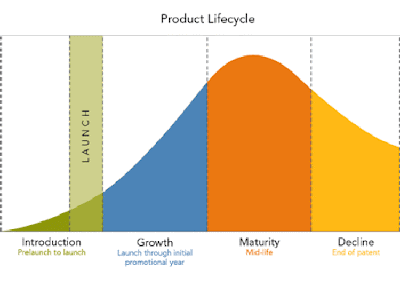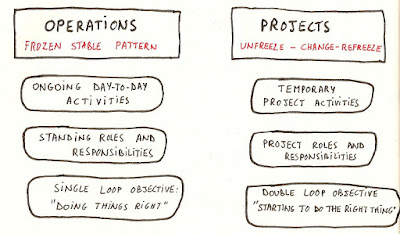There is often more confusion as to the difference between corrective actions versus preventive actions versus defect repair
Below is a brief explanation which will help you understand the difference
There are 4 particular types of change request i.e corrective actions, preventive actions. defect repair & Scope Change
Remember the triple constraints are Time , Cost & Scope and we would add another constraints that is Quality , which would be helpful to when we go through the definitions of these 4 types of change request
Let's start with
Corrective action is associated with time and cost and it is a reactive change request meaning we are over budget or behind schedule
Preventive action is also related to cost and time but it is proactive , We are not over budget or behind schedule but we are heading towards negative direction and we wanted to make this change in order to reverse that negative trend
A defect repair is a quality issue , You need to fix something which doesn't meet the requirements, whether customer sees it before or after it doesnt matter but it has to be repaired
Corrective Action is an action taken to prevent recurrence!
Preventive Action is an action taken to prevent occurrence other than non compliance in first place i.e if the preventive action would have been in place then the problem would have not have occurred!
There is often more confusion as to the difference between corrective actions and defect repair as many people think it is synonymous , defect is we are fixing something (quality issue) , corrective action is related to schedule or budget
For Example :
You hang the cabinets in a new house and door doesn't close properly , you may think you need about corrective action indeed it is a defect repair.
It would be a corrective action if you change the cabinets and blew up your budget and then you re-fix the new cabinets.
The Scope change request will update your baselines meaning only an approved scope change request update the baselines.
We don't re-baseline for corrective, preventive and defect repair because we want to track the impact of what the issue was and the resolution
Another Example :-
You are on a long drive. Your car breaks down in the middle of the journey. Discover that the spark plug is full of carbon. Cause was that the car was not serviced for last 6 month, and since the last service it has ran for almost 5000 kms. The situation worsens, when you know that you do not have an extra spark plug.
Corrective Action: From next onward you have be keeping a extra spark plug.
Preventive Action: Before going for a long drive, you shall anticipate what all can go wrong or the undesirable situations. And shall identify the preventive action for all the undesirable situations or problems.
I hope the above example must have clarified your doubts between Corrective Actions Versus Preventive Actions Versus Defect Repair
You may also like :-
Below is a brief explanation which will help you understand the difference
There are 4 particular types of change request i.e corrective actions, preventive actions. defect repair & Scope Change
Remember the triple constraints are Time , Cost & Scope and we would add another constraints that is Quality , which would be helpful to when we go through the definitions of these 4 types of change request
Let's start with
Corrective action is associated with time and cost and it is a reactive change request meaning we are over budget or behind schedule
Preventive action is also related to cost and time but it is proactive , We are not over budget or behind schedule but we are heading towards negative direction and we wanted to make this change in order to reverse that negative trend
A defect repair is a quality issue , You need to fix something which doesn't meet the requirements, whether customer sees it before or after it doesnt matter but it has to be repaired
Corrective Action is an action taken to prevent recurrence!
Preventive Action is an action taken to prevent occurrence other than non compliance in first place i.e if the preventive action would have been in place then the problem would have not have occurred!
There is often more confusion as to the difference between corrective actions and defect repair as many people think it is synonymous , defect is we are fixing something (quality issue) , corrective action is related to schedule or budget
For Example :
You hang the cabinets in a new house and door doesn't close properly , you may think you need about corrective action indeed it is a defect repair.
It would be a corrective action if you change the cabinets and blew up your budget and then you re-fix the new cabinets.
The Scope change request will update your baselines meaning only an approved scope change request update the baselines.
We don't re-baseline for corrective, preventive and defect repair because we want to track the impact of what the issue was and the resolution
Another Example :-
You are on a long drive. Your car breaks down in the middle of the journey. Discover that the spark plug is full of carbon. Cause was that the car was not serviced for last 6 month, and since the last service it has ran for almost 5000 kms. The situation worsens, when you know that you do not have an extra spark plug.
Corrective Action: From next onward you have be keeping a extra spark plug.
Preventive Action: Before going for a long drive, you shall anticipate what all can go wrong or the undesirable situations. And shall identify the preventive action for all the undesirable situations or problems.
I hope the above example must have clarified your doubts between Corrective Actions Versus Preventive Actions Versus Defect Repair
You may also like :-
Enterprise Environmental Factors Versus Organizational Process Assets
Project Statement Work Versus Business Case
Project Statement Work Versus Business Case


